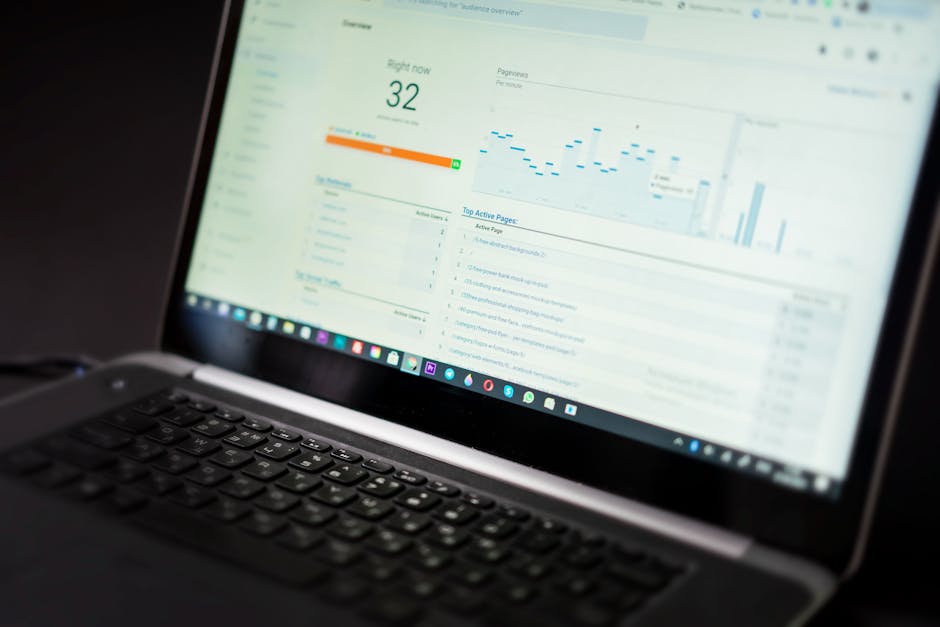This report details why dashboards must be more than static data displays. In markets where complex operations reign, every chart, filter, and formula plays a key role in driving smarter decisions and preventing repeated work. The insights below blend technical examples, real-world case studies, and actionable strategies for transforming your dashboard into a strategic tool.
Key Concepts in Dashboard Optimization
- KPI Drift
- The slow yet persistent deviation of measurement targets away from their intended values due to flawed data collection or analysis methods.
- Rework Loops
- The recurring need to redesign or recalibrate dashboards when initial designs fail to adapt to dynamic market conditions or internal process changes.
- Signal Latency
- The delay between data generation and its reflection in the dashboard, which can lead to outdated decision-making.
Understanding the Market Need
In competitive industries, a dashboard must do more than display numbers; it must tell a story. By integrating comprehensive indicators and contextual data, dashboards empower users to not only detect issues such as dynamic market shifts but also identify the root cause of discrepancies that lead to repeated rework. Case studies from manufacturing and finance illustrate how even minor formula inaccuracies or undocumented filters can derail KPI projection dashboards and regional priority recommender systems.

Design Pitfalls & Lessons Learned
A common misstep in dashboard design is relying on static views incapable of capturing rapid market fluctuations. Historical examples reveal how internal tool logic that is rigid or undocumented can generate continuous rework loops. For instance, relying on filters that are not updated creates ripple effects across multiple departments, much like the well-known issues experienced with some legacy IBM Watson deployments. These issues accentuate the need for flexible, forward-thinking design frameworks.
- Initial Design: Basic data presentation with minimal context.
- Integration Stage: Incorporation of dynamic metrics and real-time updates.
- Feedback Loop: Iterative reviews and adjustments to address emerging errors.
- Optimization: Continuous refinement to reduce rework and drive KPI accuracy.
Data Storytelling & Tactical Illustrations
The power of data storytelling is highlighted through real-world examples within supply chain and financial dashboards. Converting raw data into compelling narratives has proven essential to link specific risk incidents with significant revenue impacts. Such narratives help explain how internal build attempts to combat complex enterprise RAG patterns often fall short until the data is reframed and contextualized.
How can rework be reduced through improved dashboard design? Optimizing data visualization by connecting key metrics to narrative insights has significantly cut down the need for constant redesigns and troubleshooting, reinforcing the importance of storytelling in technical domains.
Actionable Strategies for Enhanced Decision-Making
Implementing rule-based enhancements and layered KPI aggregation methods are two proven strategies to improve dashboard reliability. Iterative feedback loops further allow operational teams to tackle data quality issues as soon as they arise, ensuring that dashboards remain both accurate and actionable.
Below is a comparison of key performance indicators pre- and post-dashboard optimization:
| KPI Metric | Pre-Optimization | Post-Optimization | Impact (%) |
|---|---|---|---|
| Data Accuracy | 75% | 92% | +22% |
| Rework Frequency | 5x/month | 1x/month | -80% |
| Operational Downtime | 4 hours/month | 1 hour/month | -75% |
| Stakeholder Satisfaction | 68% | 90% | +32% |
| Considerations: Iterative improvements, dynamic data integration, and regular stakeholder engagement have been key drivers in achieving these performance enhancements. Related keywords include risk_scoring, kpi_projection_dashboards, and region_priority_recommender. | |||
This table reinforces that strategic design changes not only streamline operations but also yield measurable benefits that promote long-term decision-making success.
Continuous Iteration & Stakeholder Engagement
Adapting to evolving market conditions requires dashboards that continuously innovate. Regular quarterly reviews, blending automated validations and manual adjustments, have proven effective. The iterative approach—mirroring agile practices common among dynamic tech startups—ensures that every adjustment better captures emerging trends and strategic directives, reducing the risk of cascading errors.
Engagement with cross-functional teams drives a culture of continuous improvement, where feedback is not only welcomed but systematically integrated to enhance dashboard performance.
Additional Insights on Iterative Feedback Loops
Organizations that embed iterative feedback loops in their dashboard design process typically see a significant reduction in operational rework. By establishing risk scoring alerts and clear proformas, teams can identify discrepancies early. Drawing from examples like Microsoft's Copilot iterations, the blend of automated insights with human oversight creates a resilient data ecosystem.
Final Thoughts
The journey to design high-performance dashboards is paved with continuous learning and agile adaptation. By addressing issues such as KPI Drift, Rework Loops, and Signal Latency head on, decision-makers can implement tactical and strategic measures that drive measurable outcomes. The insights provided in this report offer not only a blueprint for reducing rework but also a framework for elevating overall operational efficiency through smarter, data-driven decisions.